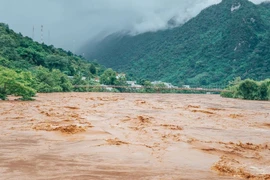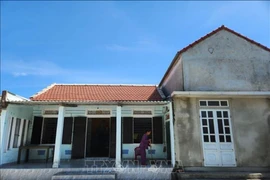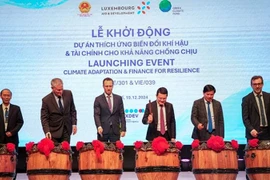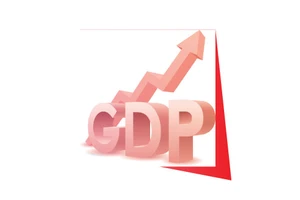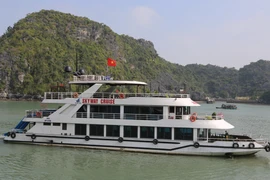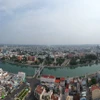Hanoi (VNS/VNA) - The Government has released a national plan aimed at tackling climate change, improving natural resource management and protecting the environment.
It sets clear goals to be achieved by 2030, including the completion of climate-resilient infrastructure and improved capacity for disaster prevention and adaptation.
Priority is given to building resilience across natural ecosystems, the economy and communities, while investing in smart adaptation strategies.
Forecasting and early warning systems will be enhanced to mitigate the impacts of extreme weather events, with a particular focus on ensuring human safety during storms and floods.
Authorities aim to ensure that most households in disaster-prone areas will have access to safe housing.
On emissions reduction, the plan seeks to curb greenhouse gas emissions compared to 'business-as-usual' scenarios, promote energy conservation and increase the share of renewable energy in the national energy mix.
In natural resource management, the Government will speed up mapping of key mineral and marine resources, expand geological surveys and assess coastal and offshore areas. Sustainable water use is a priority, with tighter controls, more efficient irrigation and reduced losses.
Measures will be taken to address water scarcity and drought during the dry season, particularly in the south-central region, the Central Highlands, the Mekong Delta and remote island communities.
The plan also aims to maintain 3.5 million hectares of land for rice cultivation to ensure food security and economic development.
In terms of environmental protection, the Government aims to ensure that all industrial zones are equipped with centralised wastewater treatment systems that meet national standards.
More than half of the domestic wastewater in second-tier urban areas and above is expected to be treated properly.
Contaminated land, particularly areas heavily polluted by toxic chemicals and dioxins left over from wartime, will be fully remediated.
Air quality in urban centres and densely populated areas will be improved, with clean water access expanded to rural and urban residents alike.
Public awareness campaigns will be scaled up to promote a unified understanding and proactive response to climate change and environmental issues.
The Government is calling for a nationwide shift in behaviour towards sustainable consumption, green growth, low-carbon development and the circular economy.
Special attention will be given to early environmental education for children, starting from primary school.
The plan also outlines efforts to update and strengthen legal frameworks on climate action and environmental governance.
A new national strategy will be developed to address non-traditional security threats by 2030, with a vision to 2045.
Administrative structures at both central and local levels will be streamlined for greater efficiency and responsiveness in climate and environmental management.
To ensure coherence across sectors and regions, integrated policy mechanisms and inter-agency coordination will be improved. Financial instruments and market-based tools will be used to mobilise resources for climate resilience and environmental protection. Key environmental laws will be revised, including those governing meteorology and hydrology, energy efficiency, marine resources, biodiversity and forestry.
The national strategy for green growth will be implemented effectively through 2030, with a long-term vision to 2050. Pilot models of green urban and rural economies will be promoted and scaled up, alongside initiatives that support sustainable production and consumption.
The Government will also prioritise investment in tackling environmental degradation, biodiversity loss, and resource depletion, while working towards the long-term goal of achieving net-zero emissions. Comprehensive programmes and projects will be launched in the 2026–2030 period to address urgent environmental issues and advance national climate adaptation efforts.
Vietnam will carry out its national circular economy action plan through 2035, with ministries and localities developing their own roadmaps tied to digital transformation.
Research and pilot projects will guide adoption across sectors, while the Government reviews material use to shape sustainable resource policies./.
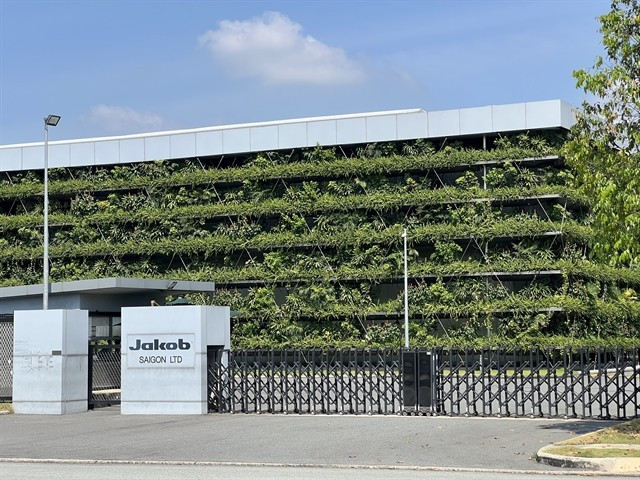
See more
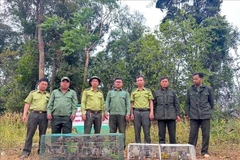
Lam Dong releases hundreds of wild animals back into the wild
According to the Ta Dung National Park Management Board, the park has for years served as a trusted destination for authorities and residents to hand over and release wildlife. Such actions not only contribute to biodiversity conservation but also help reduce illegal hunting and captivity of wild animals.
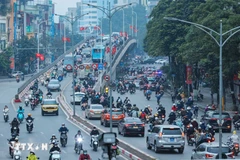
Hanoi pilots early air quality forecasting system
The system can forecast air quality trends over time and across locations, helping authorities guide and implement pollution control measures.
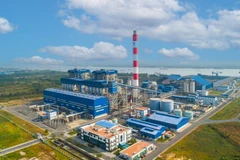
Recycling fly ash into valuable resource: sustainable path towards circular economy
The rate of fly ash utilisation has steadily increased over the years, to 84% in 2021 from 37.5% in 2018. During 2022–2023, many plants managed to consume 100% of the daily fly ash produced while also processing a significant portion of long-stored stockpiles.
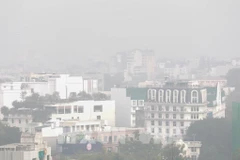
Hanoi targets 20% reduction in PM2.5 levels
Hanoi has affirmed its commitment not to trade environmental protection for economic growth. The city is moving to establish low-emission zones (LEZs) as a core measure to control emissions and promote green, sustainable urban development.
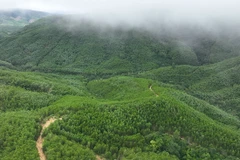
Forest protection, development stepped up from start of 2026
Localities are requested to encourage the participation of mass organisations, schools, businesses, armed forces and communities, while enhancing public responsibility for caring for and protecting trees after planting.
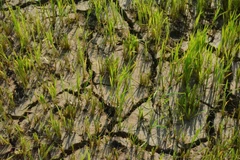
Vietnam takes actions to combat desertification, ensure sustainable land, resource management
Preventing and combating desertification is identified as a key task, helping with nature and biodiversity conservation, sustainable management of forests, water and land resources, and improvement of people's incomes and life quality.
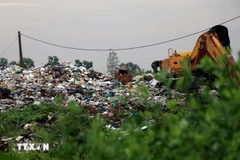
Ca Mau approves investment policy for waste-to-energy plant
The waste-to-energy plant is planned for construction in Dat Moi commune, covering a total area of about 20 hectares. It will have a waste treatment capacity of approximately 600 tonnes of household waste per day and a power generation capacity of 6MW.
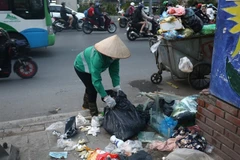
Hanoi to require household waste sorting, allow collectors to refuse unsorted trash
Under the new rules, household waste must be separated at source into recyclable materials, food waste and hazardous waste.
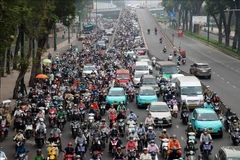
HCM City curbs pollution through transition to green transport
Together with metro expansion, HCM City will continue to enlarge its electric and green bus network, targeting a public transport share of 15–20% of travel demand.
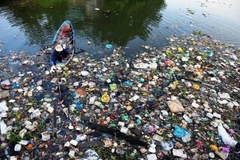
Plastic waste piles up as Vietnam struggles to curb culture of convenience
Vietnam produces nearly two million tonnes of plastic waste each year, most of it unrecycled. Interviews with young consumers and environmental experts reveal why regulation alone has struggled to curb a problem rooted in daily habits and low-cost plastic.

Peak Fansipan blanketed in ice on Christmas Day
With temperatures hovering between 1 and 3 degrees Celsius, frost and ice covered the summit area, creating an ideal condition for tourists eager to admire icy scenery, clouds and experience a Christmas atmosphere amid a sea of cold mist.
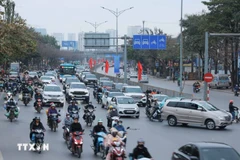
Vietnam targets vehicle emissions with stricter standards, digital enforcement
A substantial share of vehicles currently in use, especially motorcycles in use for years without routine checks or upkeep, are aging fleets that rank among the biggest emitters.
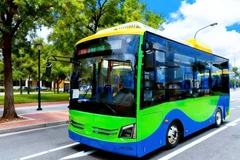
First public electric bus route in Con Dao Special Zone starts December 25
Electric bus Route No. 173 runs through 39 passenger pick-up and drop-off points, directly linking two locations with high travel demand — Con Dao Airport and Con Dao Market.
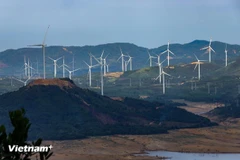
Nationwide mandatory management of emission quotas to be launched from 2028
Representatives of energy, coal – mineral, cement, and building materials enterprises said that the implementation of emission quota allocation must strike a balance between emission reduction targets and the maintenance of growth momentum.
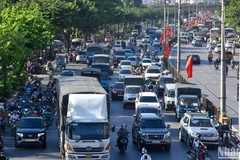
20 trailblazing companies in national green ESG rankings honoured
In 2025-2026, the “For a Green National Environment” programme will pivot around six tasks that merge expertise with broad social outreach, including targeted communications, "Journey to Net Zero" conferences and trainings, ESG surveys and announcements, a "National Green Ambassador" contest, a "Green Fashion" design competition, and the rollout of "National Green Station" models focused on zero-waste living.
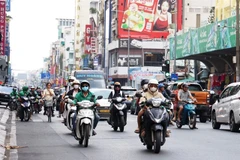
HCM City considers installing more air quality, subsidence monitoring stations
Under the proposed natural resources and environmental monitoring programme for next year, the city would operate 157 air quality monitoring points, 254 surface water monitoring points, 41 groundwater monitoring points, 54 soil monitoring points and 31 seawater quality monitoring points.
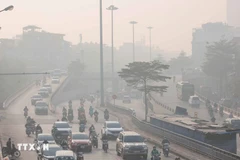
Hanoi to launch 5,000 public electric bicycles
In a move to reduce air pollution and promote green mobility, Hanoi has approved a plan to deploy 5,000 public electric bicycles, alongside restrictions on petrol- and diesel-powered vehicles in the city’s central area.

Natural disasters forecast to remain unpredictable next year
As of the end of last month, the East Sea had seen 15 typhoons and six tropical depressions, making it the year with the highest number of typhoons and tropical depressions on record, surpassing the previous record of 20 in 2017.
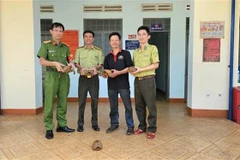
Rare elongated tortoises handed over to Gia Lai authorities
The animals were then transferred to the Dak Doa area forest protection unit for further care and necessary procedures before their release back into the natural habitat.

Vietnam, UK launch 24.3 million USD initiative to strengthen coastal resilience
An innovative effort for people and nature, COAST is a game-changer for vulnerable coastal communities facing the urgent threats of climate change.
